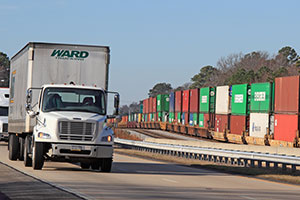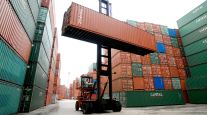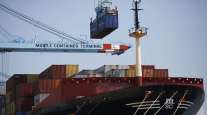Intermodal Rail Traffic Drops in February Due to Problems at West Coast Ports

Intermodal rail traffic declined 6.5% in February from the same month last year as problems at West Coast ports and bad weather impacted traffic, the Association of American Railroads said.
Rails moved 929,395 intermodal units, and total traffic dipped 1.1% to 1.1 million carloads from the same period last year, AAR said March 4 in its weekly report.
“The problems at West Coast ports clearly had an impact on rail traffic in February. Bad weather in the East and Midwest didn’t help,” AAR Senior Vice President John Gray said in a statement.
“It’s not possible to quantify the impact of these factors precisely. However, economic fundamentals remain mostly positive, so railroads are expecting significant traffic improvements in March,” he said.
Eleven of the 20 commodity groups AAR tracks increased over last year in February, led by metallic ores at 21.9% and grain carloads at 10.9%.
For the first two months of 2015, intermodal traffic declined 2.8% to 1.9 million, and carload traffic increased 2.3% to 2.25 million.
Intermodal container traffic for the week ended Feb. 28 declined 6.3% to 241,598 units. Rail carload volume, which excludes intermodal units, declined 7% year-over-year to 267,060 carloads.
Canadian railroads moved 56,430 intermodal units, a 4% increase. Mexican rail moved 11,063 units, a 2.3% rise from the same time last year.




